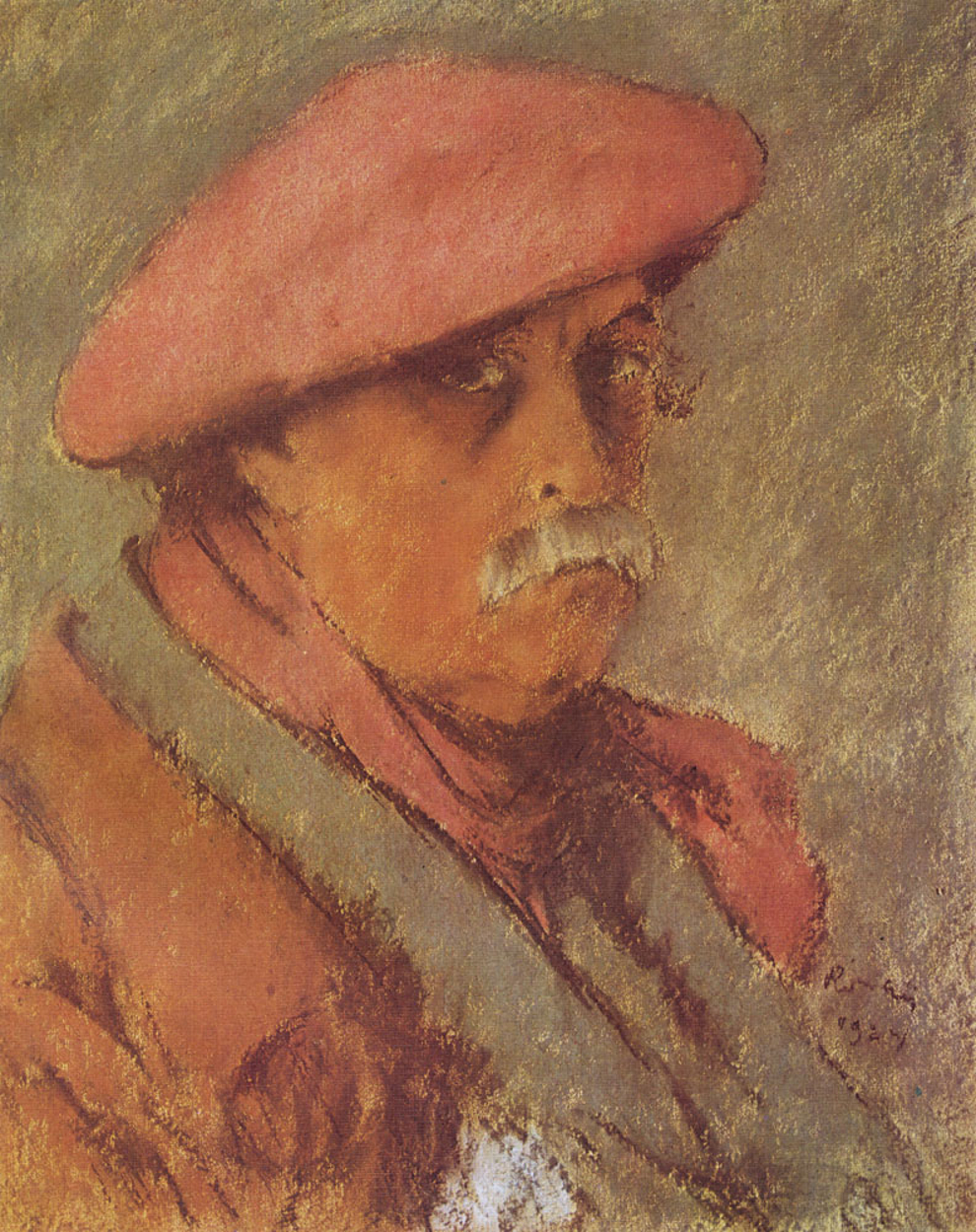The outstanding artist of Hungarian Post-Impressionism, József Rippl-Rónai was active as a member of the Nabis during his stay in Paris in the last decade of the 19th century. Within the frames of synthetic symbolism, the group endeavored to give equal weight to all groups of decorative art objects that they could best present in an interior unifying the work of several artists. In this spirit, Rippl-Rónai designed the dining room furnishing of Count Tivadar Andrássy’s Buda (now part of Budapest) palace. The furniture was manufactured by Endre Thék’s workshop, the ceramics by the Zsolnay factory, the glass windows by Miksa Róth, the glass objects by the Wiesbaden glass factory. From the textile decoration (embroidered frieze, folding screen, door hanging and tapestry), only the tapestry, a peak of Hungarian Art Nouveau textile art hung above the mantelpiece, survived World War II.
In the middle, we see the woman in the red dress who turns partly away from the viewer. She holds a tiny flower in one hand, and her other hand is stretched behind her with the typical gesture of Japanese prints. The predominant colors are various shades of red and green. The serene and rich color scheme and patch-like planar presentation radiate the calm of decorativeness. In the lower left corner it is signed Rónai 1898. The tapestry was embroidered by Lazarine Baudrion, the French wife of the artist.
P.S. Our sale is on! Save 20% on our Prints Collection and order a high-quality reproduction of the greatest masterpieces.


 József Rippl-Rónai
József Rippl-Rónai